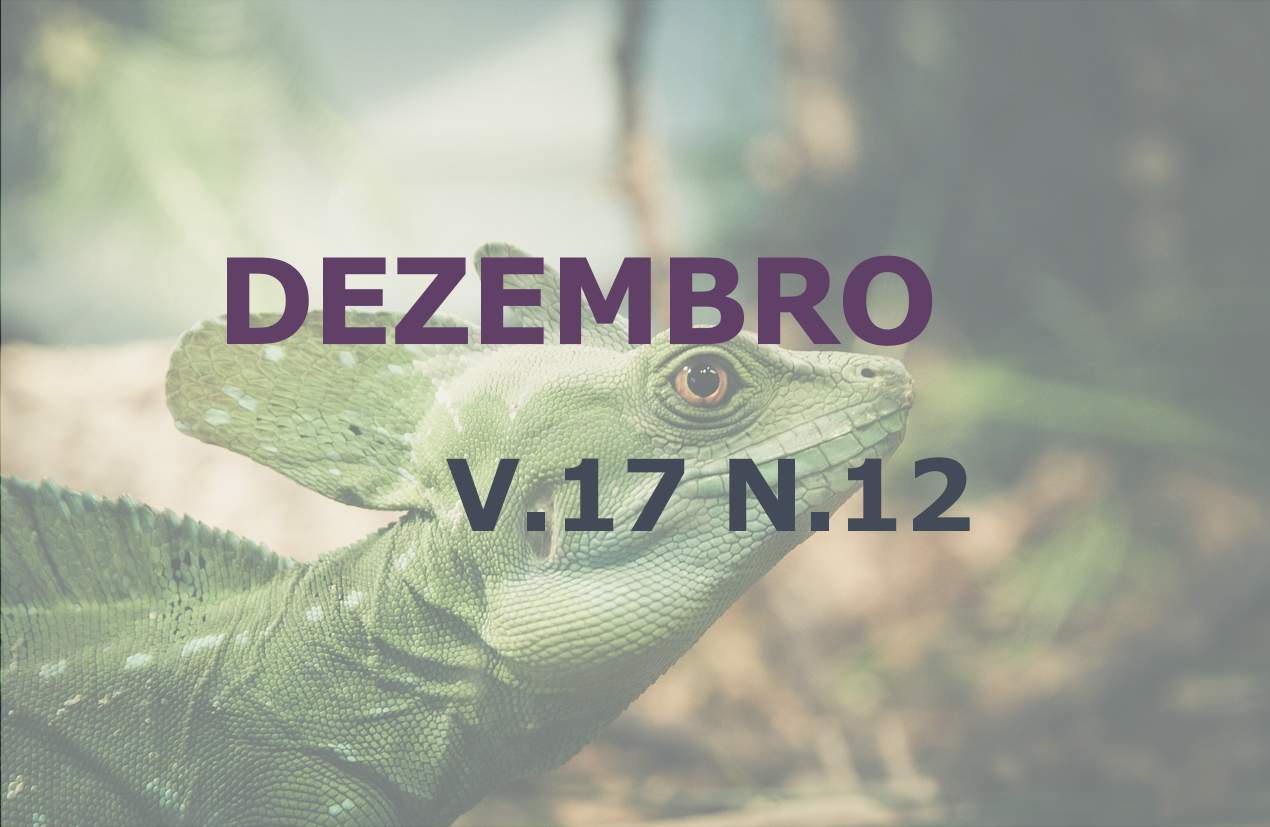Anesthetic procedures in endoscopy to remove an esophageal foreign body: Case report
DOI:
https://doi.org/10.31533/pubvet.v17n12e1478Keywords:
anesthesia, endoscopy, foreign body, dogAbstract
The use of anesthetics in endoscopic procedures has multiple beneficial functions, such as reducing the response to stress, better postoperative respiratory function, and less postoperative pain. On the other hand, an endoscopy has its disadvantages, such as a more limited visibility of the operated area and, therefore, longer duration of surgery with the possibility of greater use of the anesthetics. However, the benefits outweigh these disadvantages, as the recovery prognosis for patients is favorable. As endoscopy is a procedure that has become increasingly common in veterinary medicine due to its practicality, it is very important that the veterinary anesthesiologist be prepared to apply adequate sedation in the procedure. During the transoperative period, the animal remained stable, despite the resistance of the foreign body to damage and it persisting in the region of the cervical esophageal mucosa.
References
Asakawa, M. (2016). Anesthesia for endoscopy. Veterinary Clinics: Small Animal Practice, 46(1), 31–44. https://doi.org/10.1016/j.cvsm.2015.07.006.
Bongard, A. B., Furrow, E. & Granick, J. L. (2019). Retrospective evaluation of factors associated with degree of esophagitis, treatment, and outcomes in dogs presenting with esophageal foreign bodies (2004–2014): 114 cases. Journal of Veterinary Emergency and Critical Care, 29(5), 528–534. https://doi.org/10.1111/vec.12875.
Brodbelt, D. C., Flaherty, D. & Pettifer, G. R. (2017). Risco anestésico e consentimento informado. In K. A. Grimm, L. A. Lamont, W. J. S. A. Greene, S. A. Robertson, & J. Lumb (Eds.), Anestesiologia e analgesia em veterinária (pp. 42–83). Roca, Brasil.
Cabrera, J. S. & Fernández, S. A. (2020). Uso de la endoscopia en medicina interna de pequeños animales. Basado en la evidência científica. Revista Centro Universitário, 92, 6–21.
Camelo Júnior, F. A. A., Franco, T., Feijó, V. M., Brito, R. S. A., Medeiros, H. Z., Fonseca, M. G. M., Madruga, P. A., Priario, D. F., Jorge, S. & Squeff Filho, J. (2019). Esofagotomia torácica para remoção de corpo estranho em um cão: Relato de caso. PUBVET, 13(7), 1–5. https://doi.org/10.31533/pubvet.v13n7a380.1-5.
Chan, R. P. C. & Auler Junior, J. O. C. (2002). Estudio retrospectivo de la incidencia de fallecimientos anestésico-cirúrgicos en las primeras 24 horas: revisión de 82.641 anestesias. Revista Brasileira de Anestesiologia, 52(6), 719–727. https://doi.org/10.1590/S0034-70942002000600009.
Clark, J. C. (2015). Upper gastrointestinal endoscopy series: Part 2: upper gastrointestinal endoscopy techniques. Today’s Veterinary Practice, 5(2), 69–73.
Corrêa, A. L., Oleskovicz, A. L. C. N. & Moraes, A. N. (2009). Índice de mortalidade durante procedimentos anestésicos: estudo retrospectivo (1996-2006). Ciência Rural, 39(9), 2519–2526.
Cox, S. (2015). Endoscopy for the veterinary technician. John Wiley & Sons. https://doi.org/10.1002/9781119421320.
Domingos, L. O., Stopiglia, Â. J., Corrêa, V. P. & Fantoni, D. T. (1997). Avaliação endoscópica das lesões nas vias aéreas superiores decorrentes da intubação endotraqueal em cães. Brazilian Journal of Veterinary Research and Animal Science, 34(5), 278–283. https://doi.org/10.11606/issn.2318-3659.v34i5p278-283.
Fantoni, D. T. & Cortopassi, S. R. G. (2009). Anestesia em cães e gatos. Roca.
Garofalo, N. A. (2010). Alterações hemodinâmicas e neuroendócrinas associadas ao uso da metadona em cães conscientes e anestesiados com isoflurano. Universidade Estadual Paulista.
Mattos, A. T. M. (2018). Endoscopia em cães e gatos. Estudo retrospectivo de 134 casos. Universidade Estadual de Londrina.
Muir, W. W. & Hubbell, J. A. E. (2001). Manual de anestesia veterinária. Artmed Editora.
Raszplewicz, J., MacFarlane, P. & West, E. (2013). Comparison of sedation scores and propofol induction doses in dogs after intramuscular premedication with butorphanol and either dexmedetomidine or medetomidine. Veterinary Anaesthesia and Analgesia, 40(6), 584–589. https://doi.org/10.1016/j.tvjl.2016.01.015.
Rodrigues, D. S. A., Soares, L. L. S., Rodrigues, R. P. S., Santos, M. M., Barros, D. A., Barbosa, Y. G. S. & Rodrigues, M. C. (2016). Esofagotomia torácica para remoção de corpo estranho associado a megaesôfago em cão. PUBVET, 10(8), 615–618. https://doi.org/10.22256/pubvet.v10n8.615-618.
Rodrigues, N. M., Moraes, A. C., Quessada, A. M., Carvalho, C. J. S., Dantas, S. S. B. & Ribeiro, R. C. L. (2018). Classificação anestésica do estado físico e mortalidade anestésico-cirúrgica em cães. Arquivo Brasileiro de Medicina Veterinária e Zootecnia, 70(3), 704–712. https://doi.org/10.1590/1678-4162-9881.
Rodrigues, N. M., Quessada, A. M., Moraes, A. C., Dantas, S. S. B. & Sales, K. de K. S. (2017). Estado físico e risco anestésico em cães e gatos: Revisão. PUBVET, 11, 781–778. https://doi.org/1 0 .2 2 2 5 6 /PUBVE T.V11N8.
Slovak, J. E., Wang, C., Sun, Y., Otoni, C., Morrison, J., Deitz, K., LeVine, D. & Jergens, A. E. (2015). Development and validation of an endoscopic activity score for canine inflammatory bowel disease. The Veterinary Journal, 203(3), 290–295. https://doi.org/10.1016/j.tvjl.2014.12.030.
Sousa, J. S. (2018). Corpo estranho em região cervical de um cão: Relato de caso. PUBVET, 12(10), 1–3. https://doi.org/10.31533/pubvet.v12n10a186.1-3.
Tams, T. R. & Rawlings, C. A. (2011). Small animal endoscopy. Elsevier Mosby. https://doi.org/10.1016/C2009-0-52089-2.
Verdura, J., Carroll, M. E., Beane, R., Ek, S. & Callery, M. P. (2000). Systems, methods, and instruments for minimally invasive surgery. Google Patents.
Downloads
Published
Issue
Section
License
Copyright (c) 2023 Dr. Elias Fadel Neto, Fernando Luiz Zanoni

This work is licensed under a Creative Commons Attribution 4.0 International License.
Você tem o direito de:
Compartilhar — copiar e redistribuir o material em qualquer suporte ou formato
Adaptar — remixar, transformar, e criar a partir do material para qualquer fim, mesmo que comercial.
O licenciante não pode revogar estes direitos desde que você respeite os termos da licença. De acordo com os termos seguintes:
Atribuição
— Você deve dar o crédito apropriado, prover um link para a licença e indicar se mudanças foram feitas. Você deve fazê-lo em qualquer circunstância razoável, mas de nenhuma maneira que sugira que o licenciante apoia você ou o seu uso. Sem restrições adicionais
— Você não pode aplicar termos jurídicos ou medidas de caráter tecnológico que restrinjam legalmente outros de fazerem algo que a licença permita.





